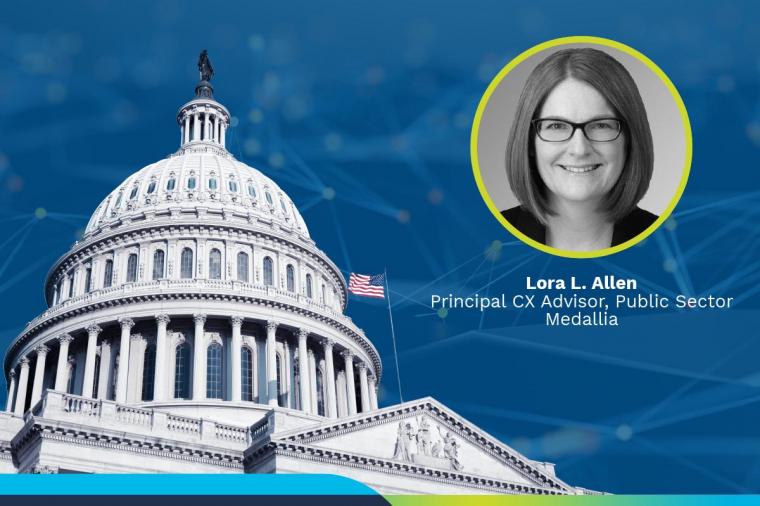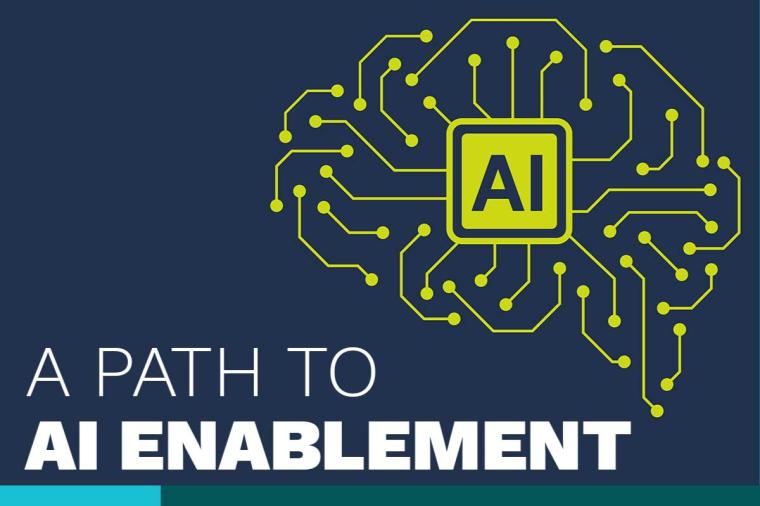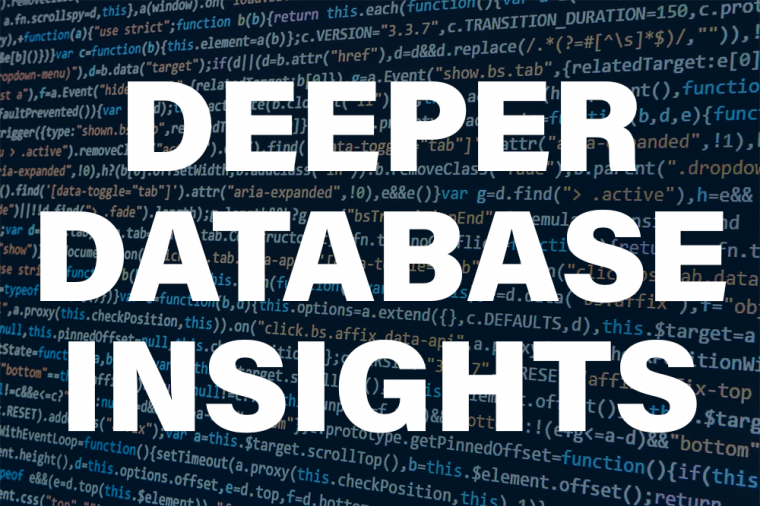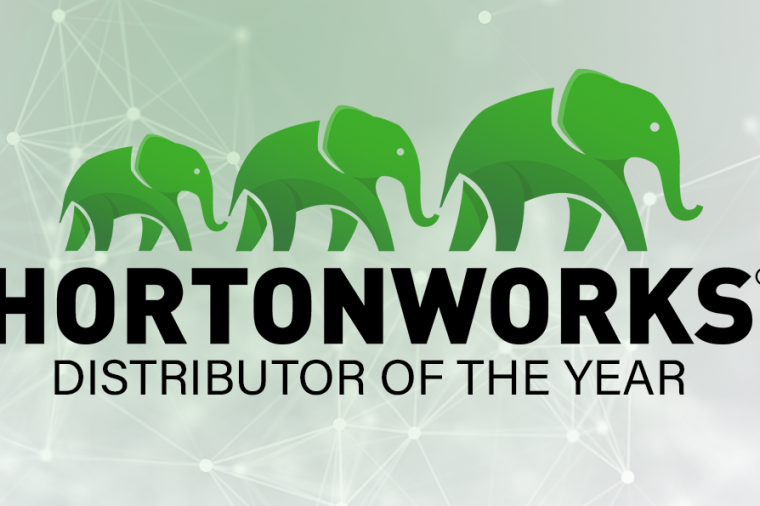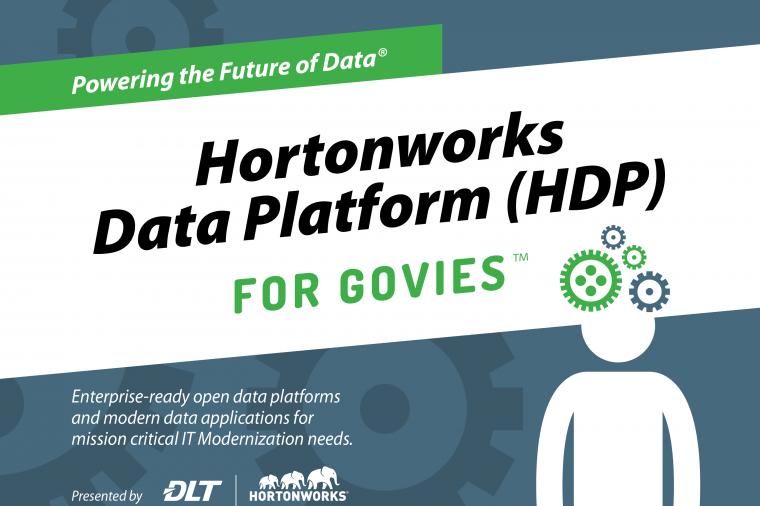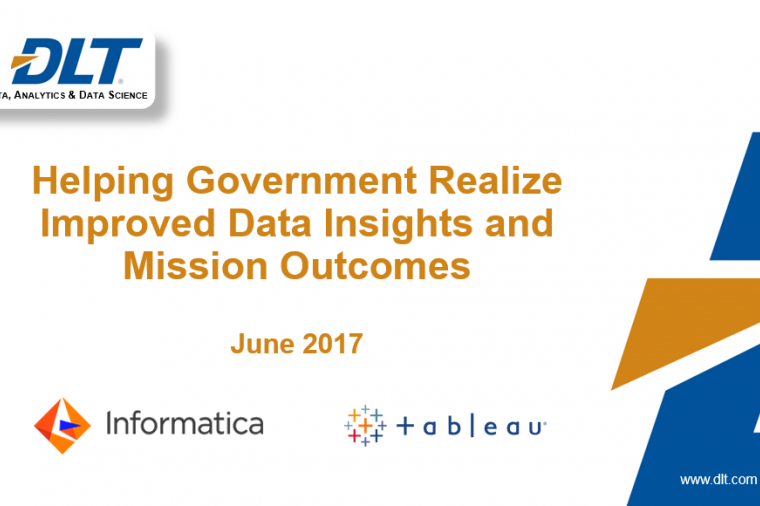How to Prioritize Data Strategy Quick-Wins for Success

The Federal Data Strategy principles (https://strategy.data.gov/principles), as currently articulated, are a set of best practices and guidelines, which could be utilized to govern the development and maturity of an organization’s management of data as an asset. However, without guidance or a framework within which to actualize these principles, these principles may well be rendered a wish-list.
Actualizing these principles and maturing an organization’s approach to data (i.e. the management, use of analytics, culture, governance, etc.) is the ultimate goal of the Federal Data Strategy as an endeavor. And to do so within many federal agencies today – as we all know - is a huge change and cultural shift.
How to make the principles actionable requires a prioritization process, and if done well, can (1) build momentum from the bottom up in an organization and (2) grow and advance a program’s objectives or an agency’s mission more generally and (3) create the very transformation the President’s Management Agenda (PMA) hopes to achieve. (NOTE: Prioritization can’t be achieved by the “data life cycle” as currently articulated – it is a process, a set of steps to follow in order to create and deploy a data solution)
There are many ways to prioritize initiatives in the public and private sector. A framework for prioritization is key to implementing a data strategy because the process can and will (1) identify target areas that provide “high-value” for an organization (in terms of initiatives supporting strategies that accomplish mission goals), (2) assess the relative complexity to deliver solutions and “quick-wins” [NOTE: “Quick-wins” help create momentum to drive transformation and culture change] It is through the execution of this type of framework that the principles become actionable and the data strategy and maturity of an organization becomes realized. As an illustrative example, below is a simplified framework that delineates a prioritization process in four steps: (1) Set strategy, (2) Needs assessment, (3) Initiatives, and (4) Prioritization.
Step 1) Articulation of strategies that are designed to help accomplish mission goals. For many organizations, innovation and modernization of their IT systems is mission critical. This typically involves a digital transformation in terms of how they deliver key mission services and objectives.
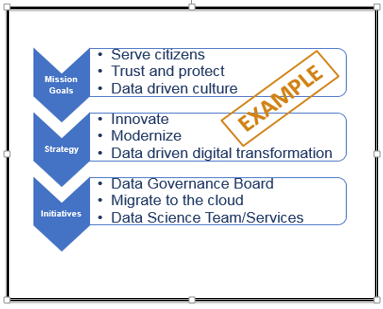
Step 2) Assessing what activities will move the needle in the right direction. Data maturity (https://www.ntis.gov/TheDataCabinet/assets/FDMM.pdf) across six dimensions means moving from low to high capabilities. It is not possible to do everything at once. Agency leaders need to assess, which components are critical in the near term, and which can be done over a longer time horizon.
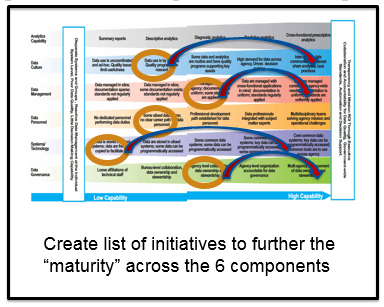
Step 3) Assess the value of the initiatives to the organization. There are many ways to determine cost and benefits. Pick one and use it to assess the relative value of all initiatives deemed critical to moving the needle in the right direction.
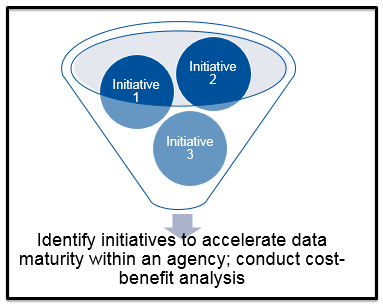
Step 4) Use a framework to help prioritize where to start – which initiatives can deliver quick-wins (high value and able to deliver quickly). Once an assessment has taken place, determine the correlation between relative value and the ability to deliver quickly.
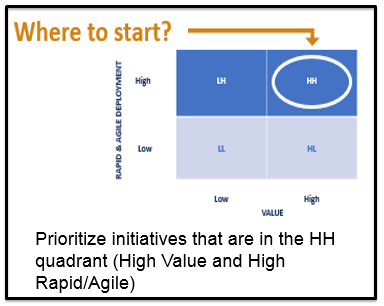
The framework above is a simple 2X2 matrix with two dimensions related to (1) the value of the project in terms of accomplishing mission goals and (2) the rapidity in which the initiative can be delivered. Any project listed in the HH quadrant are initiatives representing quick wins. This is where agency executives should focus their efforts in the near term.
DLT has numerous clients who enable federal customers to deliver quick wins for their mission objectives. Contact DLT to start the conversation and help you articulate strategies and actionable next steps to further the data maturity of your organization.
















